Part I. Site Research and Analysis


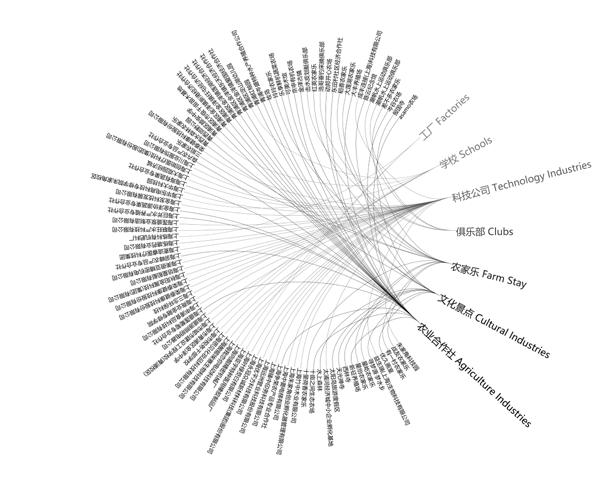


The site is located in Qingpu, Shanghai, China. As the outskirts of the city center, it’s a place where villages, farmlands, factories, and manufacturing businesses are located. Zooming into our site, it’s situated inside the Qingxi wetland countryside park, which has abundant natural resources.

4
Left: I. Location Map II. Transportation Diagram III. Program Diagram IV. Exploded Axonometric
Right: I. Population Analysis II. User Analysis and Design Potential










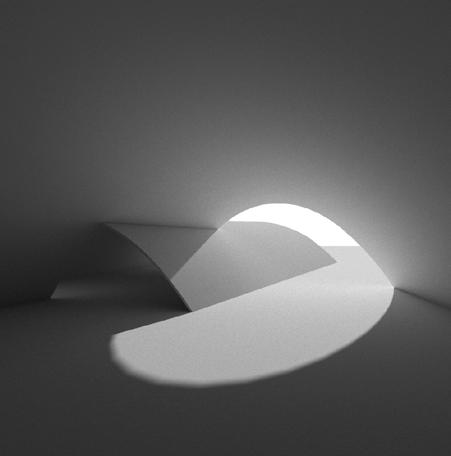
5 Sleeping Private Public Bathing Reading Drawing Running Observing Nature Taking Photos Eating Working Visiting Museum Drinking at a bar Watching Movie/ Opera Watching Street Performance Parading Top: Lighting Study Relate To Program Activities Bottom: Program Diagram Top: Lighting and Roofscape Studies
Lighting and Roofscape Renders
Bottom:
Through the sections, the sense of floatiness is reinforced by the curvature shape it generates as a whole. Artificial, artificial nature, and nature work collaboratively to form the vertical rhythm with curves, vertices, and natural rhyme.


In our interior renderings, we mainly emphasize on the light and shadow that was naturally generated by the outcome of our design. Through the opening, enclosure, and sequencial experience with light, we want to highlight the atomspheric spaces.

 Left: Section Drawings
Top: Interior render at the southern edge of the museum
Right: I. Interior render of the resturant looking out to the museum.
II. Physical Model of the project in 1:500
Left: Section Drawings
Top: Interior render at the southern edge of the museum
Right: I. Interior render of the resturant looking out to the museum.
II. Physical Model of the project in 1:500






2 Mine Mingling
rehabilitate ancient mine

Project Type: YAC Design Competition Entry
Partner with: Peiyu Luo
Year: Summer 2022
Our design, the Mine Mingling, aims to reimagine this past glorious mining industry and turns it into a contemporary meditation destination for cultural visit, hotel stays, and amenities. With an appreciation of the mining history in Allihies, Ireland, we want to appropriate the design intelligence within the historical architecture and search for an interactive conversation between the new and the old.
9
Top: Rendering of the Project


10
Left: I. Plan Conceptual Sketches
II. Interior Renderings
Right: Overall Plan Layout
Top: Overall Section
Bottom: Rendering looking at the hotel complex

11
3 ON SIMULATION - PART I
a research university on a field of bunkers

With the ambition of activating a current NASA testing base and former nuclear reactor site, this project is designed for a research university in Sandusky Ohio experiments with simulations and fabricated environments. Although the public imagery of NASA is of rocket launches and extravagant space travel, there is an incredible amount of infrastructure behind these launches that rely on the replication of the space environment. While this site already hosts multiple testing facilities, the southern portion of the NASA base contains a field of decommissioned nuclear bunkers. These bunkers are arrayed along a dominant grain, and it is in this field that we have located our campus.
Our project picks up on this grain and stitches it into the field of bunkers, with a key addition of performative infrastructure. This infrastructure, which is made up of a series of gantry cranes, creates a network between the simulation spaces we are constricting. This gantry transports the massive space objects necessary for space simulations through and above the student life that is formed on our campus. The largest forms represented here are the academic buildings: these buildings serve the purpose of simulation and are actively creating space environments. Interspersed between these buildings are a combination of the existing bunkers and added housing spaces. Our campus is laid out such that each of these different user groups will have a dedicated architecture that is arranged along our dominant linear roads. Because the site already has such varying density, the way in which our architecture is deployed also changes density, with hubs forming in the spaces where the buildings are more densely arrayed along the grain.
Project Type: Syracuse University ARC 307
Instructor: Professor. Britt Eversole
Partner with: Peiyu Luo, Justin Wolkenstein-Giuliano
Year: Fall 2021
Left: Campus Masterplan Design
12
 Top: Compilation of images collected through NASA’s series of testing programs, space exploration, and space travel missions.
Bottom: Collage study speculating the occupation of simulated environments.
Top: Compilation of images collected through NASA’s series of testing programs, space exploration, and space travel missions.
Bottom: Collage study speculating the occupation of simulated environments.



14
Left: I. Program Line Diagram, defining three primary user groups of the campus: oberservers, participants, and visitors. Students at this university will be active participants (and frequently the test subjects) for various simulations.
II. Students’ life collage study.
Right: Zoomed in section study curated around student’s life.
 Left: Zoomed in simulation activities: a zero-gravity simulation pool and a Martian surface simulator.
Right: Zoomed in section study’s physical model.
Left: Zoomed in simulation activities: a zero-gravity simulation pool and a Martian surface simulator.
Right: Zoomed in section study’s physical model.

 Zoomed in Site Axon & Site Section Aerial View
Zoomed in Site Axon & Site Section Aerial View

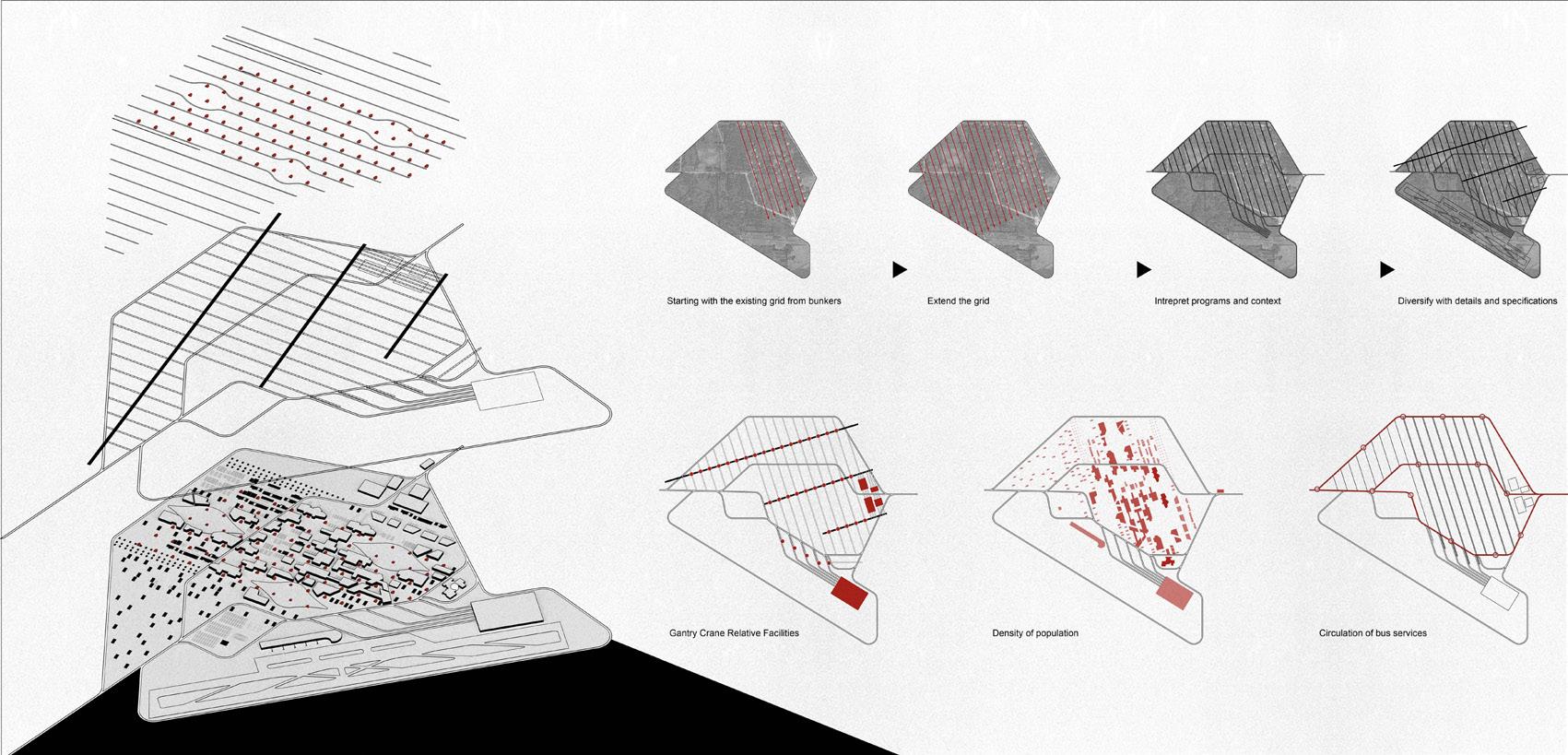



17
Left: Overall masterplan of the campus
Right: I. Sketches of masterplan II. Analytic design strategies of the masterplan.
4 ON SIMULATION - Part II an architecture in motion
Before astronauts set foot on the surface Moon, they’ll need to learn how to fly the spacecraft that send them to space travel. Learning and practicing those skills in a real spacecraft is costly, and unrealistic, as outer space will feel very different to an astronaut besides using the same aircraft. For this, bringing in machines that simulate different components of space travel builds up a whole flying simulation.
The centrifuge is the core machine that simulates high-G training which is done by pilots and astronauts who are subjected to a high level of acceleration. It is designed to increase the g-force tolerance of individuals and thus prevent pass-out and fatal incidents during flights. Besides the centrifuge, the project also houses a vertical motion simulator that moves up and down to simulate all phases of the flight, a lab host the rotation chair for a series of spatial orientation experiments, and a mission control center that simulates the navigation of spacecraft travels.
In the plan, you can see how the large volumes break down to specific programs. The simulation programs are on one side of the project, the gantry crane run through the middle, and associate programs for visitors on the opposite side. Interior circulation for the visitor is in the center. The boundaries limit their movements to enter the simulation and education zones, but openings expose the simulation activities inside the volumes.
Project Type: Syracuse University ARC 307
Instructor: Professor. Britt Eversole
Individual Work
Year: Fall 2021
Left: Floor plan of the architecture

18

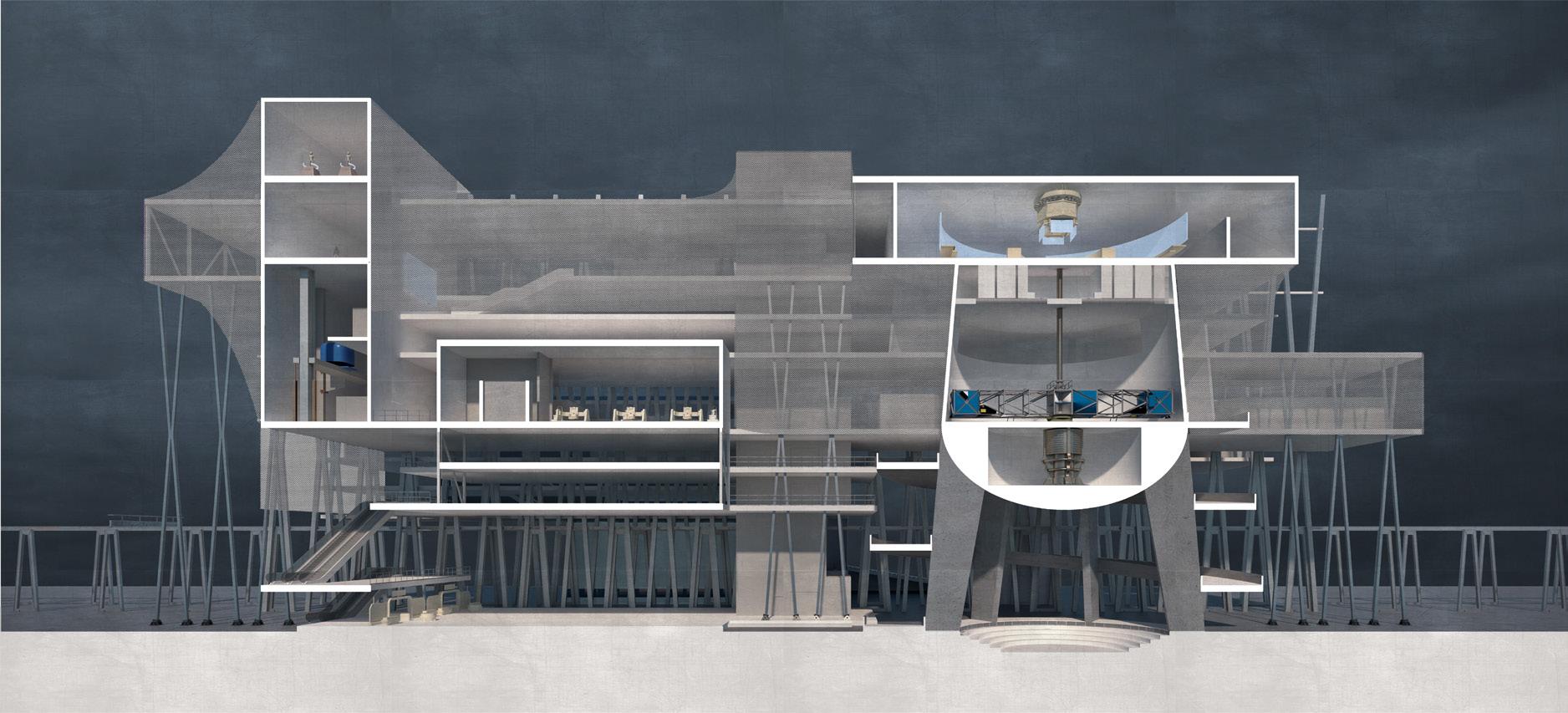



19
Left: I. Elevation II. Section
Right: Rendering perspectives of the architecture
5 Crash, Crack, Crunch!
a cultural park activating fascist infrastructure
Project Type: Syracuse University Aboard Florence Core Studio

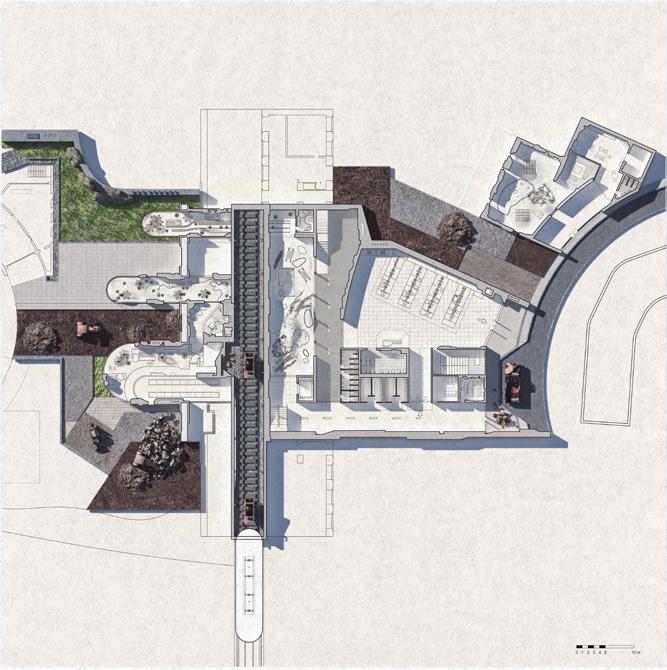
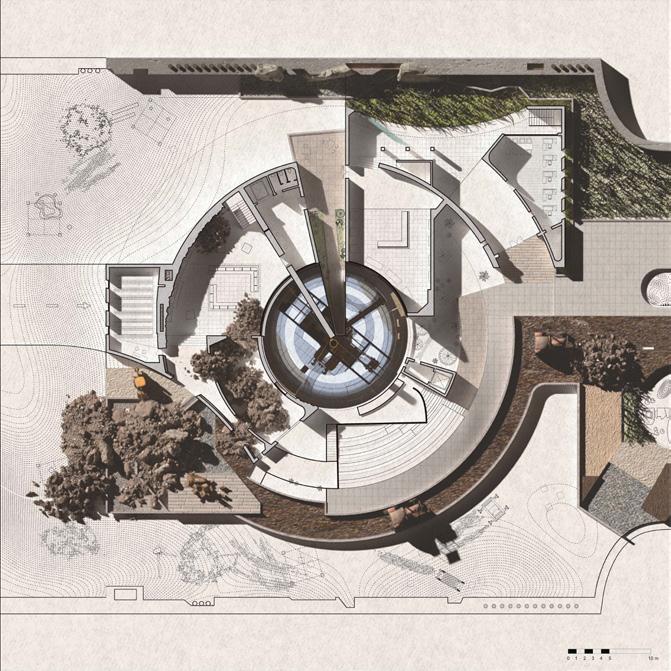

Instructor: Professor. Daniele Profeta
Partner with: Peiyu Luo, Qi Liu
Year: Spring 2022
With the ambition of activating a fascist infrastructure that touches upon Bonification, “Crash Crack Crunch” is a park hosting research, education, and artistic creation based on soil. The design is interested in discovering the friction between these programs, and ongoing muddy activities when engaging with soil exploration.


20

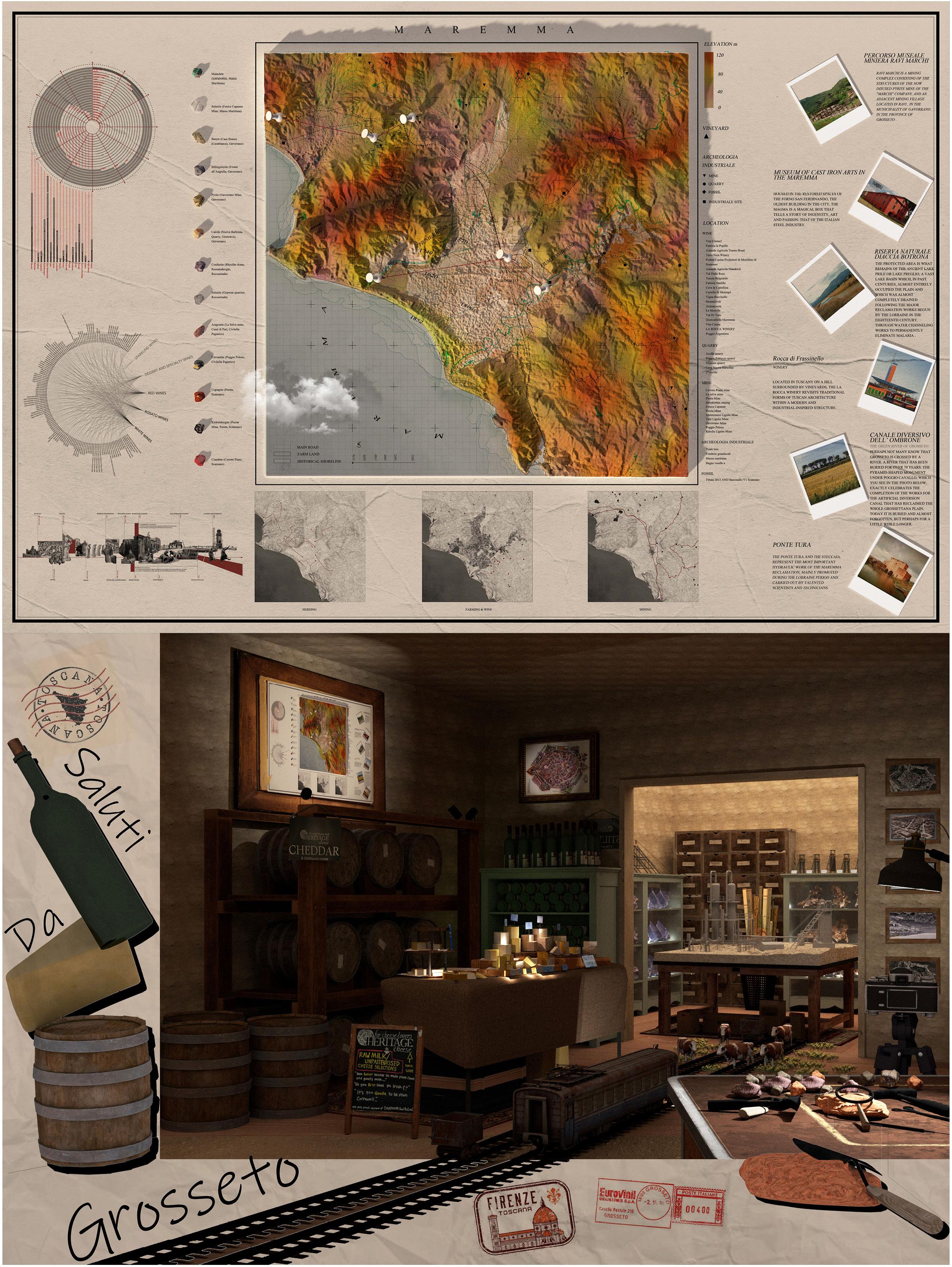

21
6 Terra Cotta Wall
ACAW workshop in progress
The ambition of this Independent study is to research and design a low embodied carbon, structurally integrated, thermally efficient and moisture resistant wall with openings, and constructed out of terracotta, one of the most ecologically efficient, low embodied carbon building materials on the planet. In addition, one of our main goals has been to reduce the amount of aluminum used in the design as much as possible in an effort to lower the ecological impact of the wall.


It is important and worthwhile to try to think differently about terracotta simply due to its versatile material properties and historical lineage as a tool for construction, utility, and art. The terra cotta manufacturing process consumes less energy with little CO2 emissions when compared to other commonly used construction materials like concrete, glass, and aluminum. Though not commonly used as a structural material, its compressive strength exceeds that of concrete. Like concrete, steel reinforcing provides tensile strength, and tightly controlled manufacturing processes result in predictable products that open the possibility for unexplored applications. Terracotta can also be glazed in a vast multitude of different varieties.
Project Type: Architecture Ceramic Assembly Workshop
Instructor: Professor. Elizabeth Kamell
Collaboration with Eli Austin, Alexander Estes, Matthew Gilligan, Maximilian Horkenbach, Peiyu Luo
Year: Fall 2022
22
.




23
7 Material Semblances






a pavilion interplay with softness of hardness of found materials
Project Type: Syracuse University Aboard Florence Architectural Professional Elective
Instructor: Professor. Cecilia Lundbäck
Partner with: Yixing Liu
Year: Spring 2022
The objective of the project is to create a pavilion that draws on material semblance studies. My teamate and I started with experimenting with four materials we found, including two textiles and two architectural materials. To better visualize the details, we used Could compare and Agisoft Metashape to generate photogrammetry. Ultimately, the pavilion was designed to encourage visitors to interact with the interplay between hardness and softness. We further developed the pavilion by detailing our design according to the dimension of constructability into twenty-one units of 3D-printed clay assembly. Our aim is to create a unique and tactile experience by transforming, merging, or designing new materiality based on existing found materials.



24








25
8 Other Works Selected Drawings and Models


Precedent Studies
Project Type: Third Year Studio




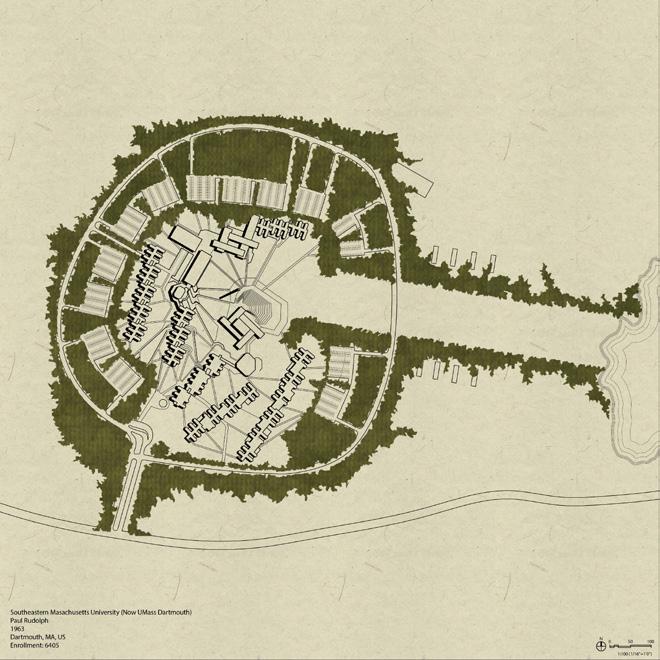
University Planning Studies


Individual Work Year: Fall 2021

26
Project: Livin’it Up
Project Type: Second Year Architecture Studio
Instructor: Professor. Ryan Brooke Thomas
Partner with: Khôi Nguyên Chu
Year: Spring 2021
In response to the environmental and political crisis in the suburban area of Antananarivo, Madagascar, this project is an agricultural and cultural center that helps to fight against deforestation and enforce sustainable farming practices. The design suggests a gentle intervention of building practice by incorporating the existing landscape, taking advantage of local typology. The walkway starts from the sloping ramp, sneaks into the interior, and continues to the experimental farming downhill. Besides, the fluid sequence invites the surroundings to access the service at any point and collaborate in the advancement of suburban society. We envision this project begins to weave a seamless network between people with different social statuses, breaking the traditional boundaries of public services.

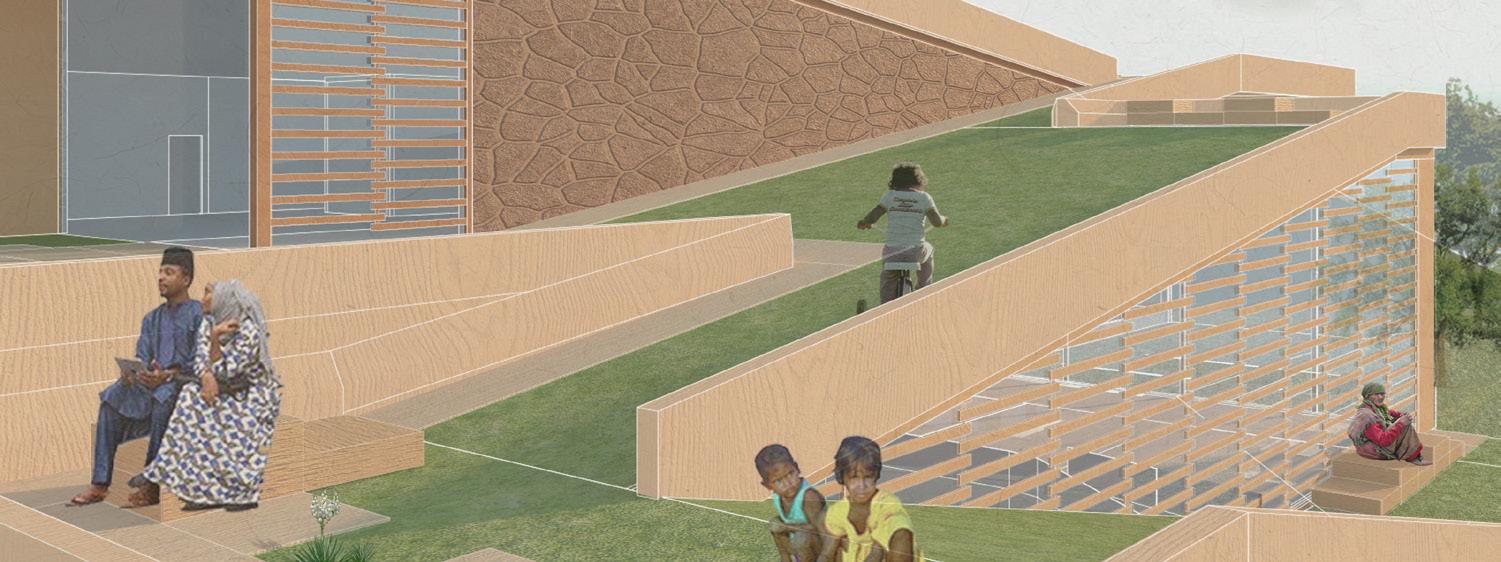
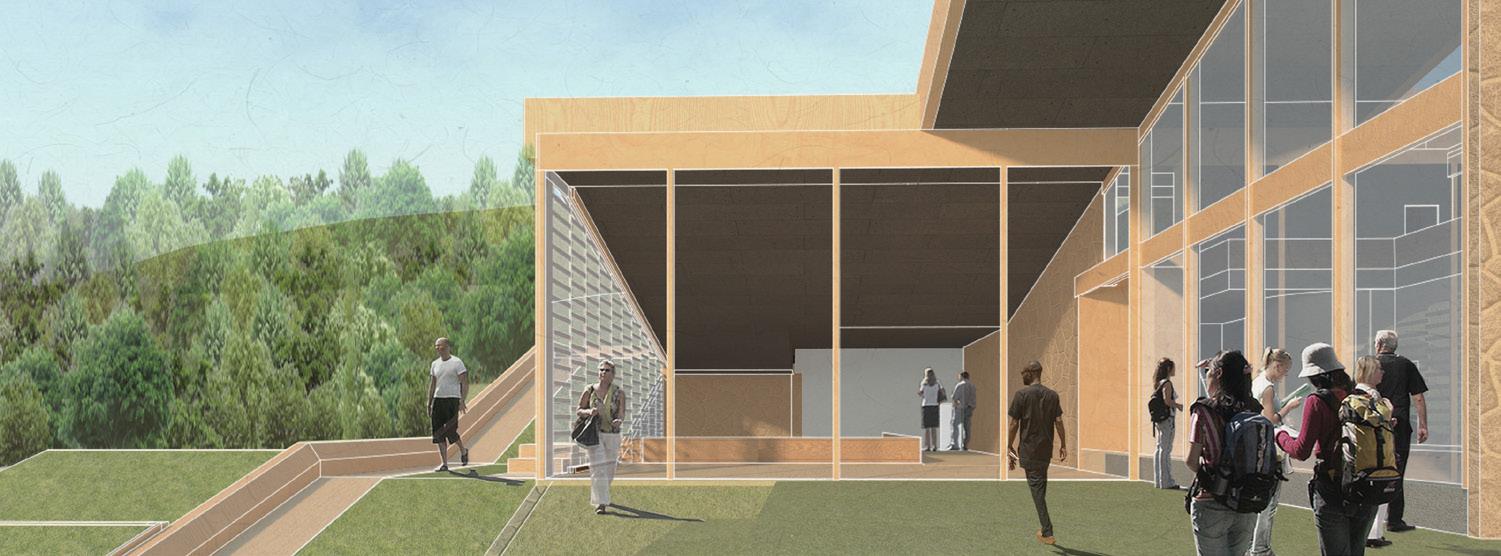

27
Hand Sketches & Physical Models
Individual Work





Left:
Right:
II. Sectional model of precedent studies
28
Sketchbook selection of surveying architecture in Italy
I. Sketchbook selection of precedent studies



29
30
Ashley Yaxin Xu | Architecture Portfolio | Syracuse University | 2023























 Left: Section Drawings
Top: Interior render at the southern edge of the museum
Right: I. Interior render of the resturant looking out to the museum.
II. Physical Model of the project in 1:500
Left: Section Drawings
Top: Interior render at the southern edge of the museum
Right: I. Interior render of the resturant looking out to the museum.
II. Physical Model of the project in 1:500











 Top: Compilation of images collected through NASA’s series of testing programs, space exploration, and space travel missions.
Bottom: Collage study speculating the occupation of simulated environments.
Top: Compilation of images collected through NASA’s series of testing programs, space exploration, and space travel missions.
Bottom: Collage study speculating the occupation of simulated environments.



 Left: Zoomed in simulation activities: a zero-gravity simulation pool and a Martian surface simulator.
Right: Zoomed in section study’s physical model.
Left: Zoomed in simulation activities: a zero-gravity simulation pool and a Martian surface simulator.
Right: Zoomed in section study’s physical model.

 Zoomed in Site Axon & Site Section Aerial View
Zoomed in Site Axon & Site Section Aerial View































































